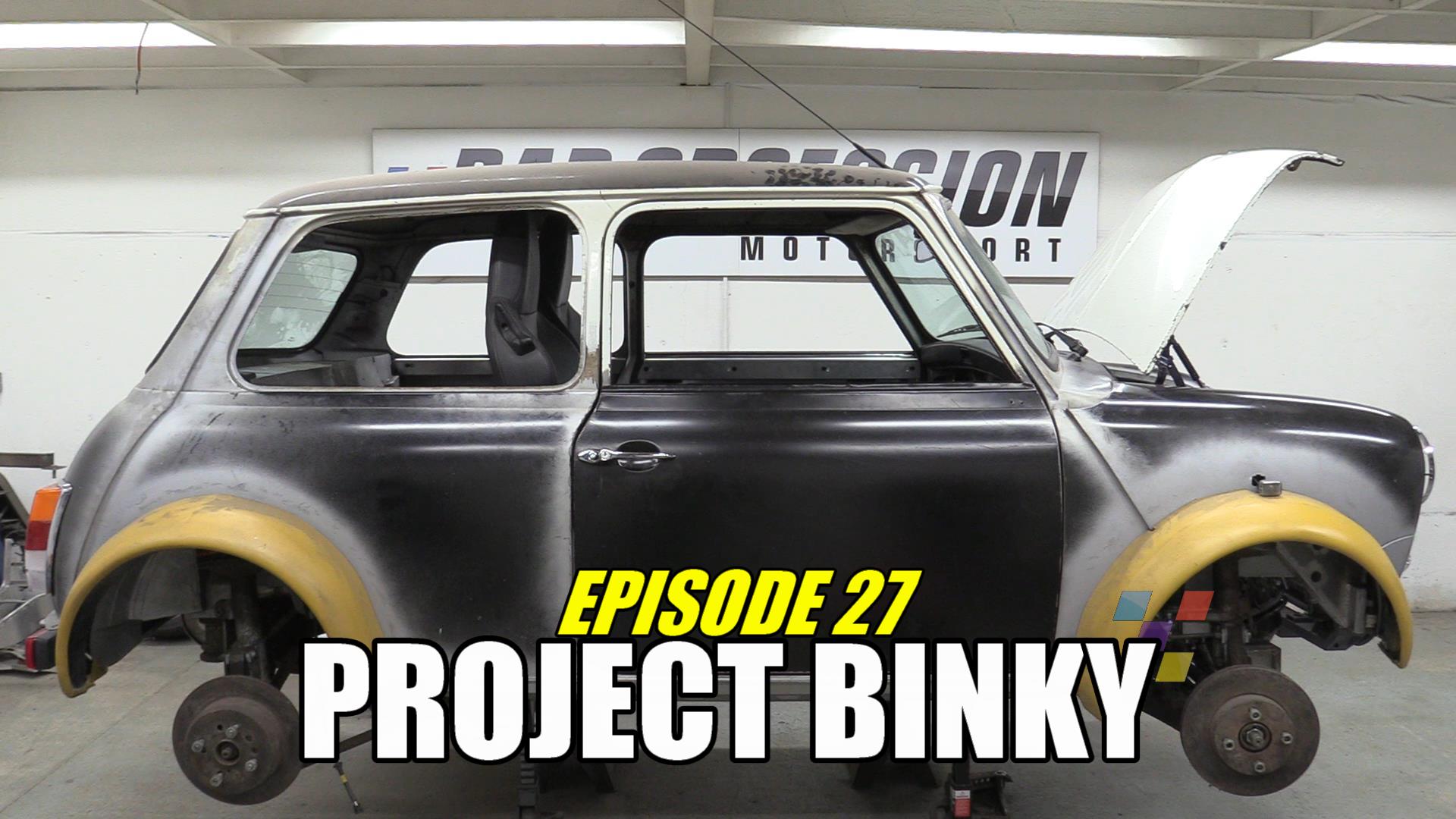A guilty pleasure of mine is watching a YouTube show called Bad Obsession Motorsports. It’s a car show in which two men are rebuilding a 1980 Mini that they endearingly call Project Binky. As a spectator you see the two fabricators attempt to fit a much too big engine (a turbo-charged all wheel drive engine from a Toyota Celica) inside the obviously small car, and making it ready to one day be a strong little rally car, leading to a need for many, many modifications. The number of custom-made changes, brackets, and all different types of fabrications is staggering, and the youtube show carefully documents the making of every part in painstaking detail.
What is interesting about this show, is that it is the epitome of “slow tv”. As other (commercial) car shows are usually filled with drama about missing parts, approaching deadlines, and seemingly unresolvable problems (that usually get resolved quite easily), Project Binky shows the reality of restoring and modifying a car in all its details.
In terms of its business modeling, you can say that this show hinges on two important elements: showing craftsmanship, combined with this sense of “slowness.”
The incredible craftsmanship of the two creators, Nik Blackhurst and Richard Brunning, is something that really stands out. In recent years, craftsmanship is reliving a sort of revival, where increasingly people are interested in the craft of creating things. This holds for the traditional arts, as well as in other parts of society where the process of making things is increasingly of interest. In this way, enjoying the art or any product is not just experiencing the end result, but this is combined with going along in the creative journey where you witness the artistic and creative process taking place.
This outstanding craftsmanship is combined with the second element of their business modeling: slowness. In showing every step of its process in all of its details, you sometimes wind up watching a two part, 89 minute special on how they machined a drive shaft out of aluminum. All documented with the calm and expert commentary (including proper British humor) of Brunning, every episode becomes a little show of itself that invites you to sit back, grab a cup of tea and become mesmerized with all that these fabricators can create with their bare hands. The slowness is also reflected in the speed in which they are finishing their project. A new episode is being release every three, four, sometimes five months which makes you eagerly await any new release. As the first episode of this show has been created in 2013 (in February 2021, Binky just finished the painting stage, but still has work to do before being finished), the online community following the build has steadily been growing and cracks many endearing jokes about the slow progress.
I strongly believe this slowness is a big part of its success. Every release is something you wait for, giving the audience a lot of time to build excitement. Every new episode is received as if a new Harry Potter book comes out, and the online community can’t wait to relax and be amazed by the new fabrications. A clever way they play into their growing online following is by setting up a system of patrons. By paying 2 euros per month, patrons get the episode one day (!) early, which obviously plays into the joke that you have been waiting for it for many months. Even though the benefits seem not to be that high, every episode ends with the list of patrons that support the show, and every show clearly displays the growing amount of paying followers (currently several hundreds).
For more information, I welcome you to take a look at their website. Even better, I welcome you to put the kettle on, make a nice warm tea, and take a look at the episodes on their youtube channel.



